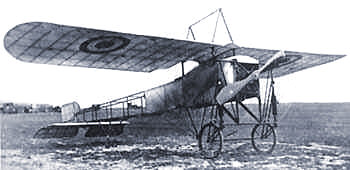 |
AIRCRAFTOF THEA E F |
BLERIOT AIRCRAFT USED AS A ROLEUR

Development and Operation
`ROLEUR'
Pilot training philosophy in France differed from that in other countries. In France, it was presumed that student pilots learned better by doing rather than by watching. Therefore, the instructor rarely, if ever, went aloft with the student. From the very beginning the student would be told, on the ground, what the instructor wanted him to do. He would then get into the airplane and learn by doing. Initial instruction was given in a variety of aircraft that had been deliberately modified to prevent them from flying (usually by clipping several feet off of the wings). This enabled the plane to roll along the ground; hence the generic name of `Roleur' for such aircraft. Other, unofficial, nicknames assigned to such craft were `Grasshopper" and `Penguin'.
|
References:
- Davilla, J. and Art Soltan, French Aircraft of the First World War
- Photo courtesy of the Author
To find other Doughboy Features visit our |
Membership Information  Click on Icon |
For further information on the events of 1914-1918
visit the homepage of |
Michael E. Hanlon (medwardh@hotmail.com) regarding content,
or toMike Iavarone (mikei01@execpc.com) regarding form and function.
Original artwork & copy; © 1998-2000, The Great War Society